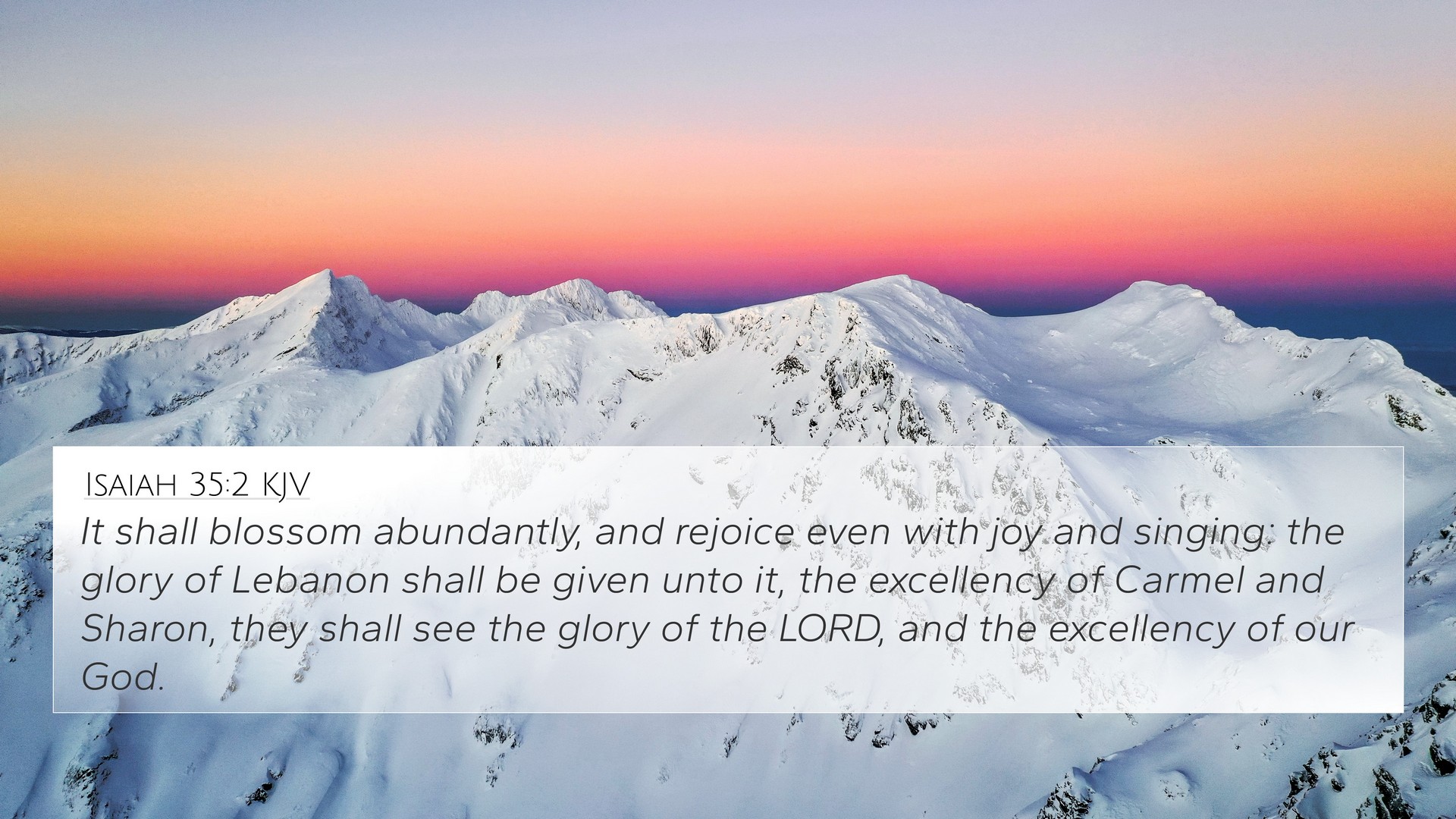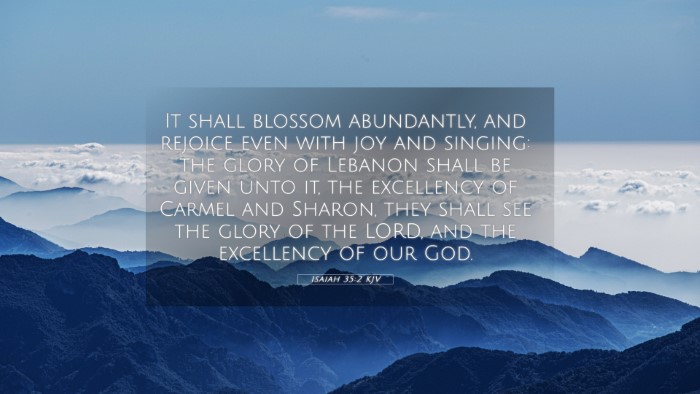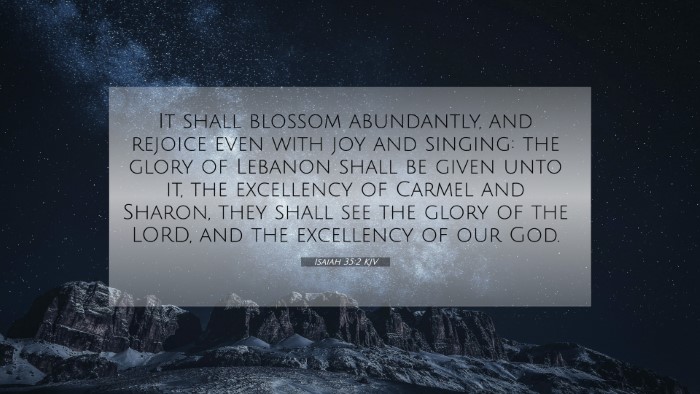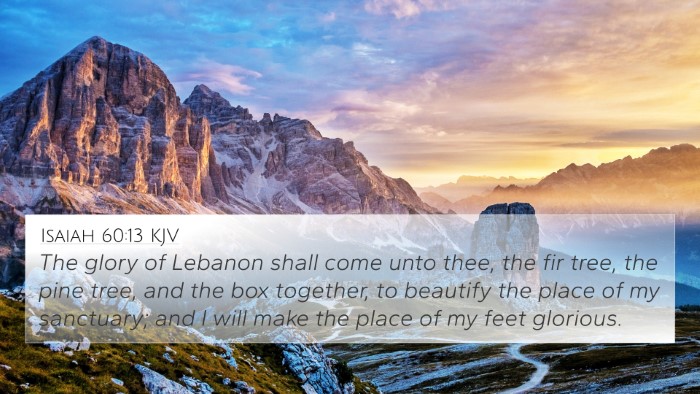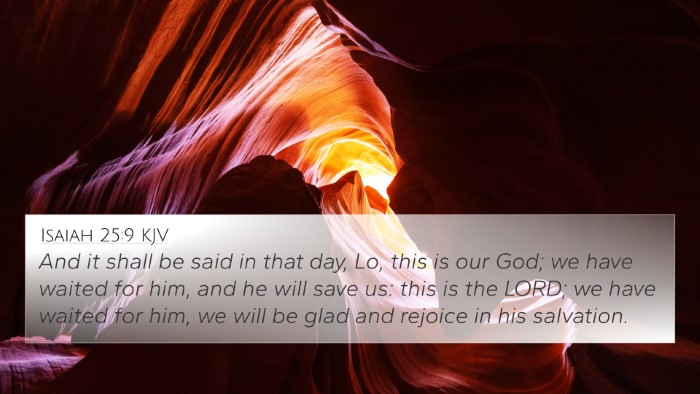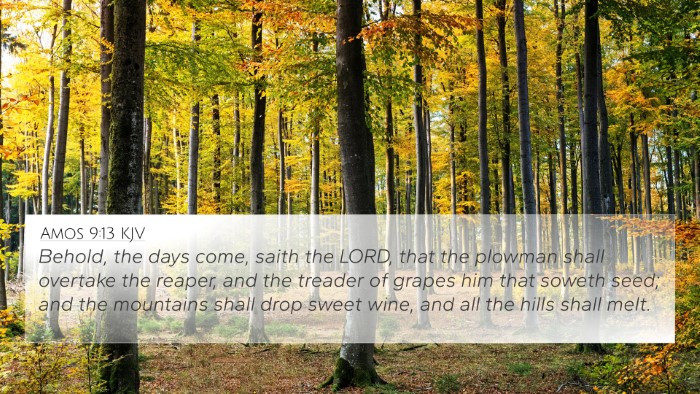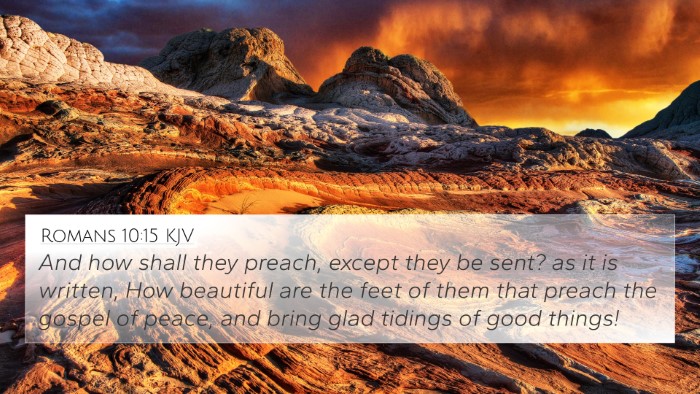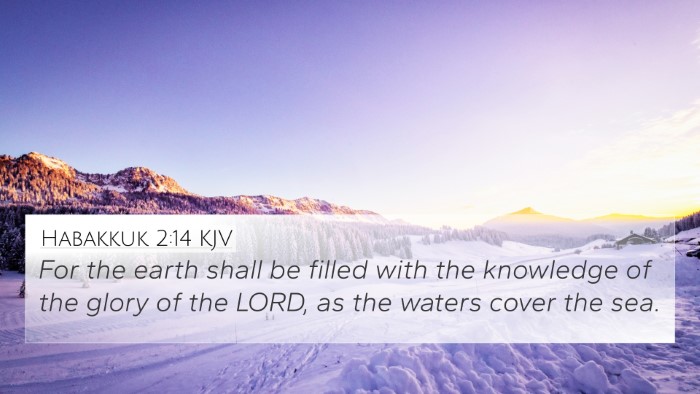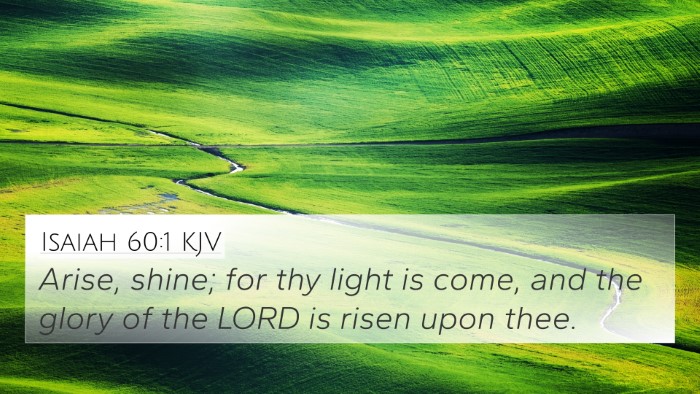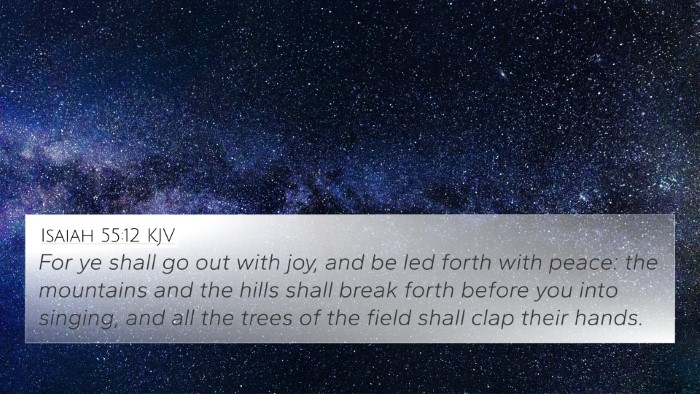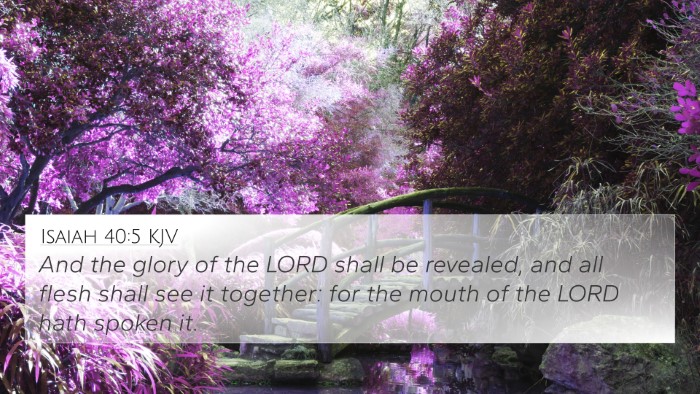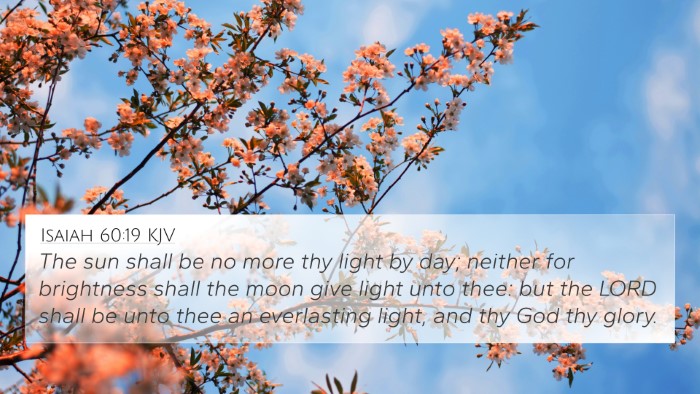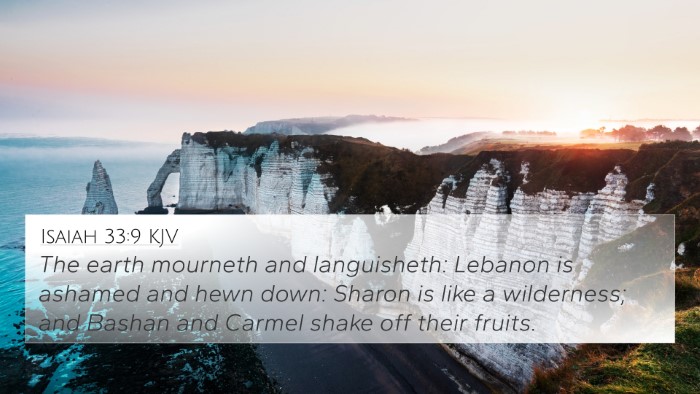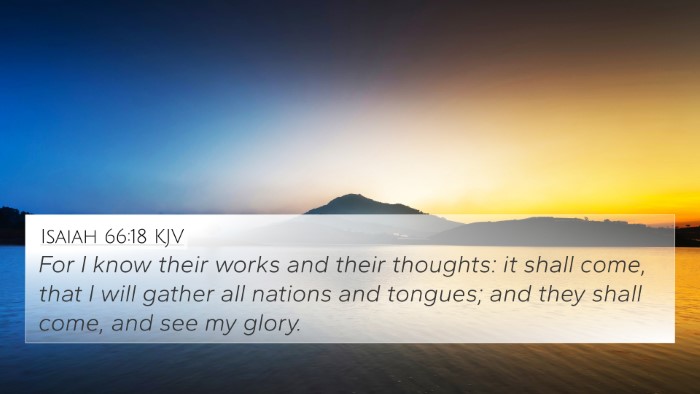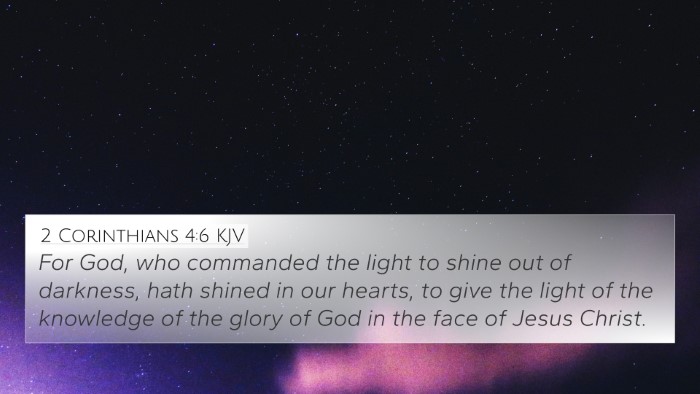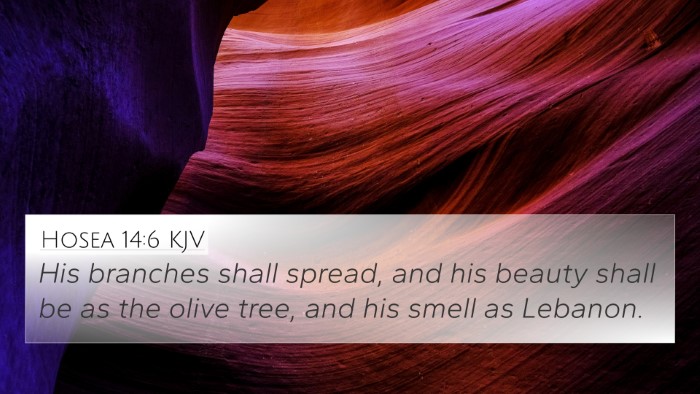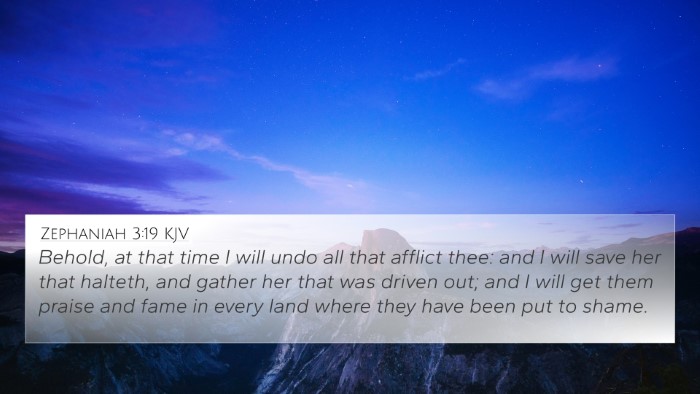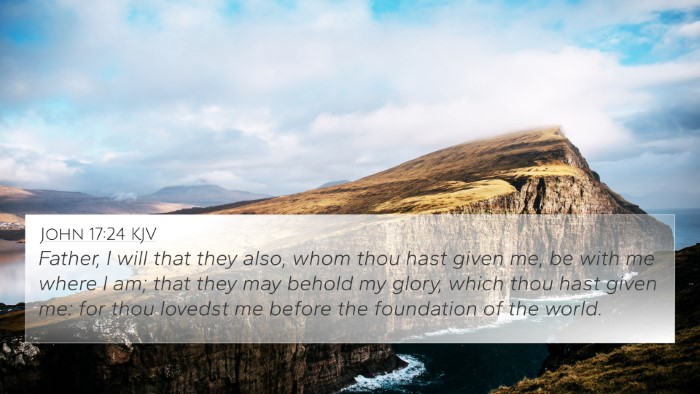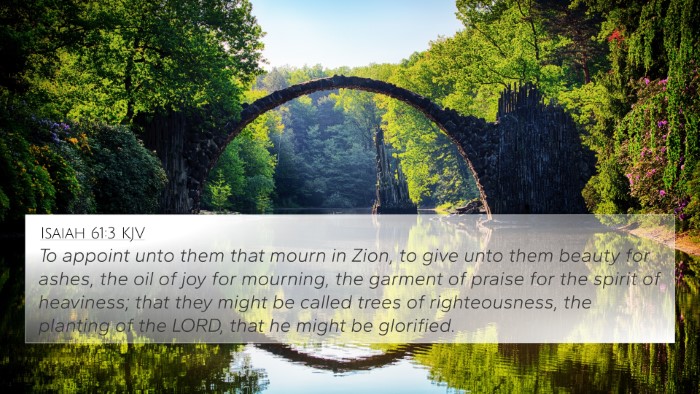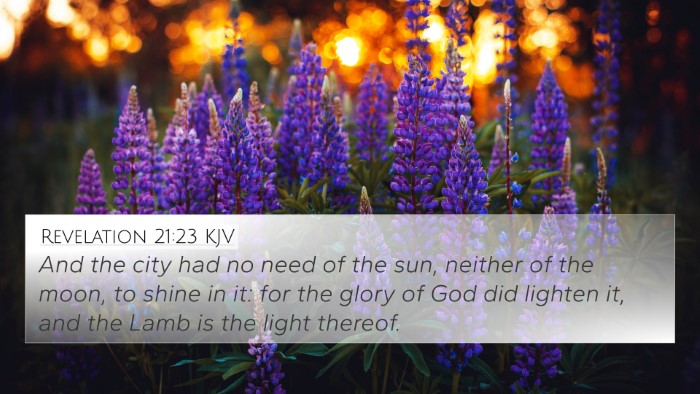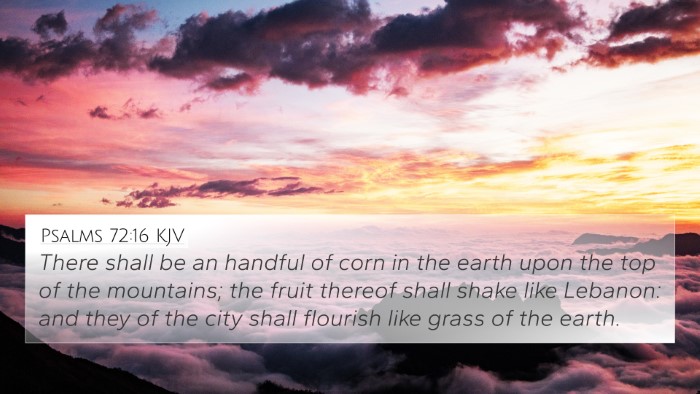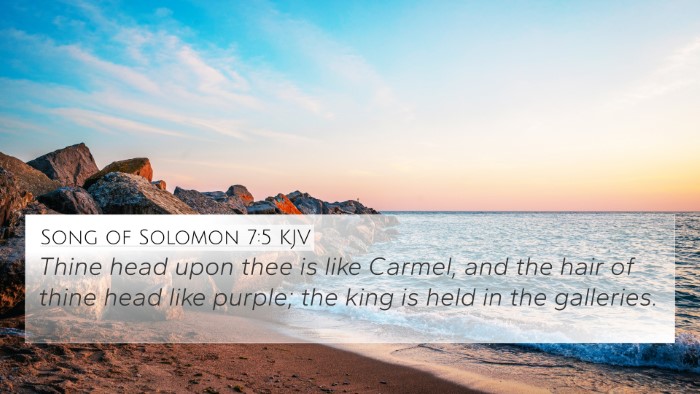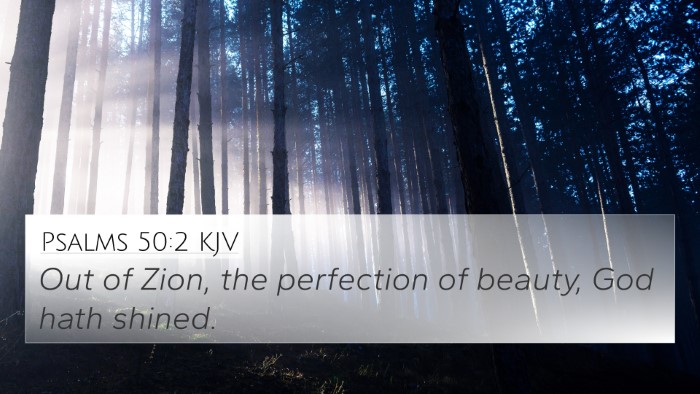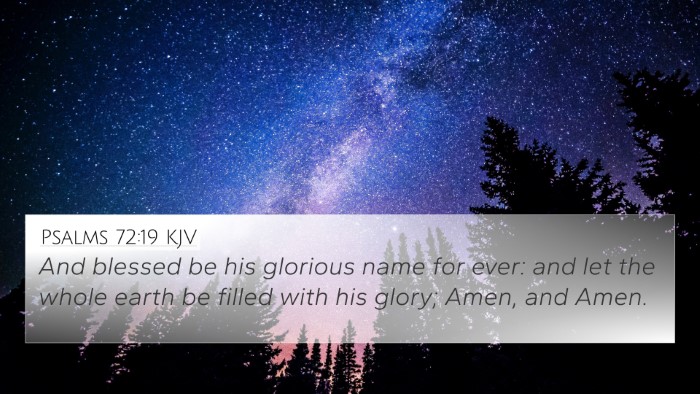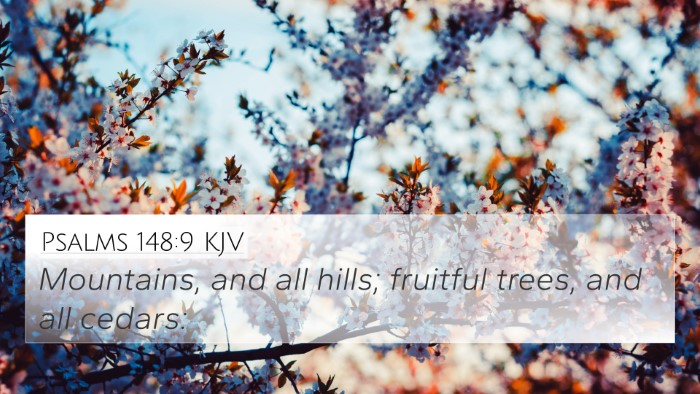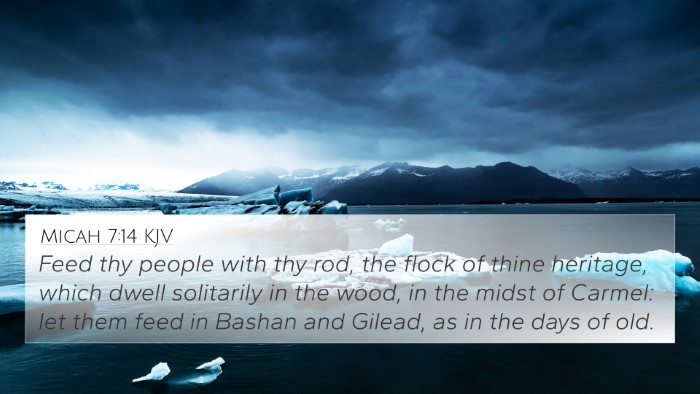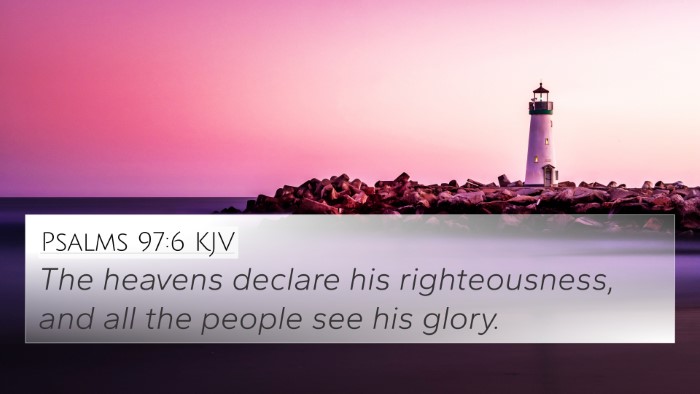Understanding Isaiah 35:2
Isaiah 35:2 reads: "It shall blossom abundantly and rejoice with joy and singing. The glory of Lebanon shall be given to it, the majesty of Carmel and Sharon. They shall see the glory of the Lord, the majesty of our God."
This verse promises a transformation and renewed vitality for the people of Israel. It reflects themes of restoration and divine presence, emphasizing the beauty and glory that God bestows.
Commentary Insights
Matthew Henry's Commentary
Matthew Henry illustrates that this verse points to the flourishing nature of God's people, likening them to a blossoming wilderness which is a metaphor for spiritual and communal renewal. The reference to joy and singing signifies a reversal from despair to hope. The imagery of Lebanon, Carmel, and Sharon represents the richness of God's blessing, symbolizing strength, beauty, and fruitfulness.
Albert Barnes' Notes
Albert Barnes emphasizes the connotation of glory associated with the land, underscoring God's transformative power. The mention of "the glory of Lebanon" is interpreted as the richness in both nature and culture, while the joy expressed symbolizes an inner satisfaction found in God's promises. The verse is prophetic, indicating not only the physical restoration of Israel but also the spiritual enlightenment that aligns with God's glory.
Adam Clarke's Commentary
Adam Clarke explains that the flourishing desert symbolizes the hope for a brighter future for the Jewish nation. The 'glory' referenced is indicative of God’s favor and presence. Clarke highlights the transition from barrenness to abundance, illustrating how divine intervention leads to rejuvenation within the community. He further discusses the broader implications, indicating that this transformation also foreshadows redemption and the coming of the Messiah.
Bible Verse Cross-References
To fully appreciate the depth of Isaiah 35:2, we can explore its connections with other scriptures:
- Isaiah 61:3 - "To grant to those who mourn in Zion, to give them a beautiful headdress instead of ashes." This verse resonates with the theme of restoration.
- Matthew 11:28-30 - "Come to me, all who labor and are heavy laden, and I will give you rest." Here, Jesus invites those in despair to find relief, paralleling the joy in Isaiah.
- Jeremiah 31:12 - "They shall come and sing aloud on the height of Zion, and they shall be radiant over the goodness of the Lord." This portrays similar imagery of joy stemming from God’s blessings.
- Revelation 21:4 - "He will wipe every tear from their eyes, and death shall be no more." This futuristic hope aligns with the joy and reversal seen in Isaiah.
- Psalm 126:5-6 - "Those who sow in tears shall reap with shouts of joy!" This verse captures the essence of transformation from sorrow to joy, resonating with Isaiah’s promise.
- Hosea 14:5-6 - "I will be like the dew to Israel; he shall blossom like the lily." This emphasizes the rejuvenation motif.
- Luke 1:78-79 - "Because of the tender mercy of our God, whereby the sunrise shall visit us from on high to give light to those who sit in darkness." The light overseeing the darkness aligns with the thematic elements of glory and redemption.
Thematic Connections
Isaiah 35:2 serves as a bridge connecting various themes found throughout the Bible, including:
- Divine Restoration: The promise of renewed hope and vitality.
- Joyful Worship: The calls for rejoicing and singing in God's presence.
- The Glory of God: The presence and majesty of God in both Israel and broader spiritual realms.
- Messianic Hope: The expectation of a Savior who brings hope and restoration.
Using Cross-References for Bible Study
When studying Isaiah 35:2, using a Bible cross-reference guide can enhance understanding. Tools for Bible cross-referencing allow readers to identify connections between scriptures efficiently. By employing a Bible concordance, one can explore related verses that support themes in Isaiah 35:2 and identify patterns that emerge throughout the Bible.
Comparative Bible Verse Analysis
In conducting a comparative Bible verse analysis, one might explore the similar messages found in Old Testament prophecies and New Testament fulfillments. Serious Bible students often engage in cross-referencing Bible study methods to uncover deeper insights and parallels.
Conclusion
Isaiah 35:2 encapsulates a message of hope, beauty, and the promise of God’s presence, echoing through various scriptures in both the Old and New Testaments. By utilizing tools for cross-referencing Biblical texts, believers can enrich their understanding of scripture, deepening their spiritual journey through the interconnectedness of God's Word.
